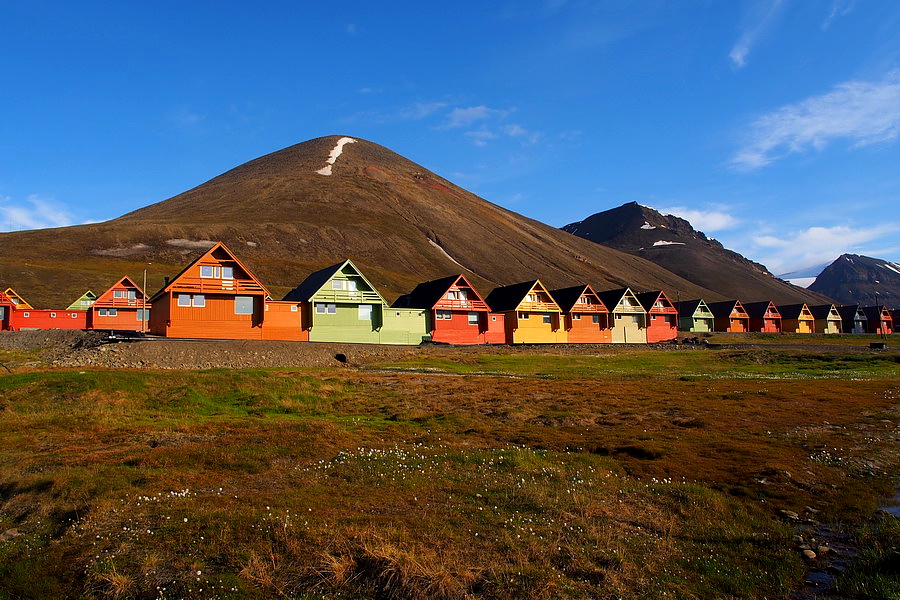A town of 2000 people where during summer the sun shines day and night, where the inhabitants walk around with guns on their shoulders, where it is prohibited to keep cats, to bear children or to bury the dead. Longyearbyen, the capital of Spitsbergen, is a strange, fascinating world.
Spitsbergen – which is part of Norway with limited sovereignty – is approximately halfway between Norway and the North Pole. Even before arriving at the capital of the archipelago I encountered several astounding stories. I was waiting for the delayed plane at Oslo airport and started chatting with a fellow passenger from Longyearbyen.
One has to leave the island weeks before giving birth
Aina married her miner husband about a decade and a half ago. He was working on Spitsbergen and the first ten years of their marriage was spent in a long distance relationship. Aina only moved there when they decided to start a family. Since then she has fallen in love with the island and cannot imagine living anywhere else. She enjoys the long, dark winter days, finds the darkness restful and has no issues with the cold.
Her children were born in her home town of Tromso since Spitsbergen has no maternity hospital. Every expectant mother has to leave the island three weeks before their due date. Most go home to their parents or relatives and give birth in hospitals there. Those who have no relations in the country (like Russian or Thai immigrants) can give birth in Tromso, the closest city. Their hotel bills are paid by the health insurance even if their stay runs into several weeks.

The bear is coming
Having insurance is widespread because of the special circumstances. For example, houses and cabins in the countryside have polar bear clauses in their insurance policies since it is not uncommon for the giant animals to break into summerhouses looking for food.
Not only child-birth on the island is problematic, burials also present difficulties. Longyearbyen’s cemetery has been out of use for decades. Due to the permafrost (continuously frozen ground) the bodies do not decompos. Therefore since the 1950’s the deceased have been taken to cemeteries in other parts of Norway. Moreover, to reduce the challenges of dealing with the dead, the critically ill and the elderly are not allowed to reside in Longyearbyen.
The residents have no financial worries. Almost all live in houses owned by their employers and pay preferential rental rates. Taking up work on the island is supported by income tax at half the normal rates and there is no VAT.
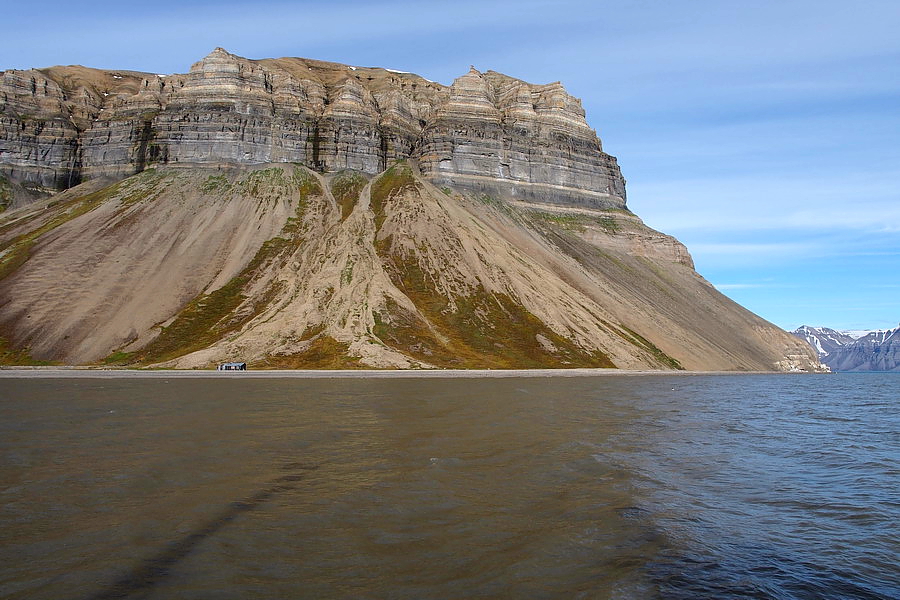
Even a town with 2000 people can be a crowded metropolis
I asked how the evenings are spent assuming that a small town like this cannot have many cultural events. ‘Of course there are events’ replied Aina with a surprise. ‘Artists like to come here. The audience is much smaller than elsewhere but in addition to the fees the artists get free excursions and events thrown in and these attract them to this bleak land.
I am so used to Budapest with its 2 million people that I was still pondering on how one must be dying of boredom in this small corner of the world. My new friend told me that she sometimes finds having 2000 people around to be too much. When that happens, the family hops on the snowmobile and goes to their house in a remote area.
‘What do you do in the dark surrounded by snow everywhere?’ I asked. ‘There is always something’, she answered cheerily. ‘We have to chop wood, make fire, cook dinner, we practice shooting, we play board games. “But how?” I asked, not getting it, since when there is snow, the darkness is almost permanent. ‘With headlamps’, answered Aina as if it was evident.
I was curious how the little ones take the cold but of course it was a naive question from an outsider. Aina’s two-year-old and four-year-old are playing outside every day in kindergarten. They are only kept inside if the temperature falls below minus 20-25. I thought they must look forward to coming home to a warm house but Aina said with a laugh that it’s not the case. ‘Even then it’s hard to get them to come inside.’
The town’s residents entertain themselves with festivals during the long winter. The jazz festival at the end of January is very popular and there is also an annual art festival in November.
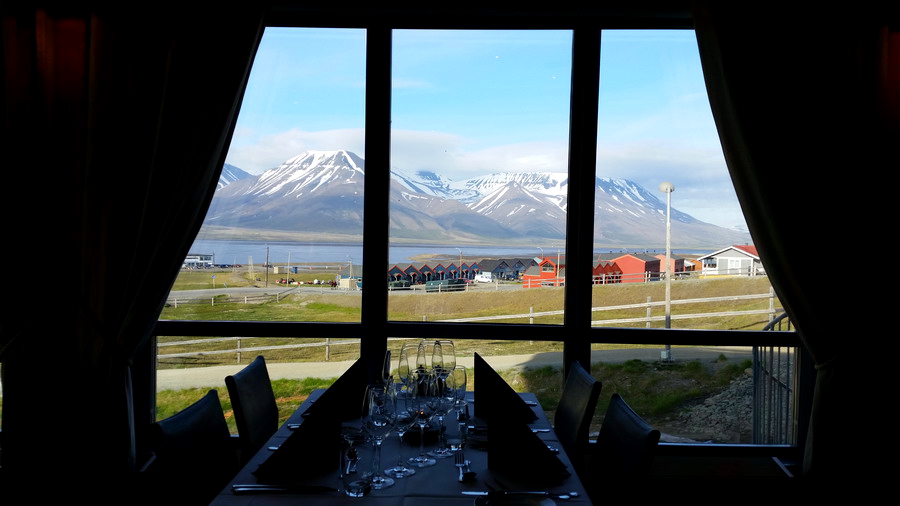
There is a big fluctuation among the capital’s residents
The town was founded by John Longyear who started the first mine with about 500 workers in 1906. The mine was taken over by a Norwegian firm after the First World War but the name of the town remained Longyear City. This was changed in 1926 to Longyearbyen (Longyear town in Norwegian). Longyearbyen is the world’s northernmost town, only smaller settlements (like Ny-Alesund) and research or meteorological stations can be found further north.
Every year about 500 new people move into the town and about the same number leave. So the relative fluctuation is huge. Aina told me that the children’s first question when meeting a new kid is not ‘what’s your name and where do you come from?’ but ‘how long are you staying?’. After losing a couple of friends they learnt not to get too close to those who will leave in a month or two. It’s a special characteristic of the population where 44 nationalities live together – without any ethnic conflict.
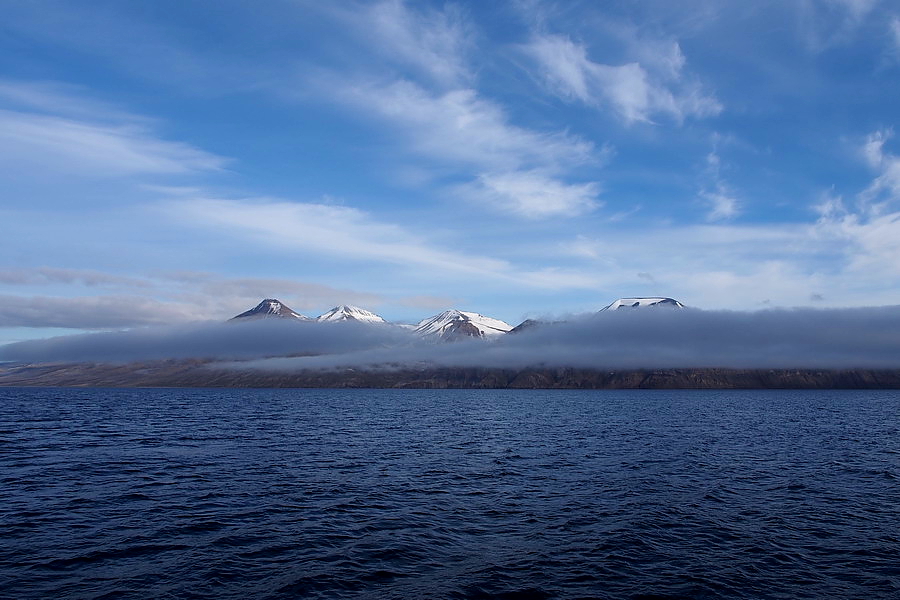
No need to worry about queuing
Tourism has been growing since 1975 when the airport opened. There are two or three flights a day, from Oslo and Tromso and less frequently from Moscow or Murmansk. Before that only large expedition ships visited the town in the summer. However, you still don’t have to worry about crowds like at the Eiffel Tower: only about 20000 people visit Longyearbyen each year.
There are only a few hotels in town and they are expensive. Expect to pay around 200-350 Euro per night. The only exception is the camping and guesthouse near the airport where you can find a bed for 75-100 Euro, but it takes about half an hour to walk into town or you have to wait for the arrival of a flight and join the passengers on the bus to the centre.
The city bus runs only to connect with arriving and departing flights since it’s not needed otherwise. During summer the lack of snow and the bright nights help to spot polar bears on the walk between the camping site and the city. However, if you arrive in winter you will need to be equipped with a gun to get into the centre on foot.
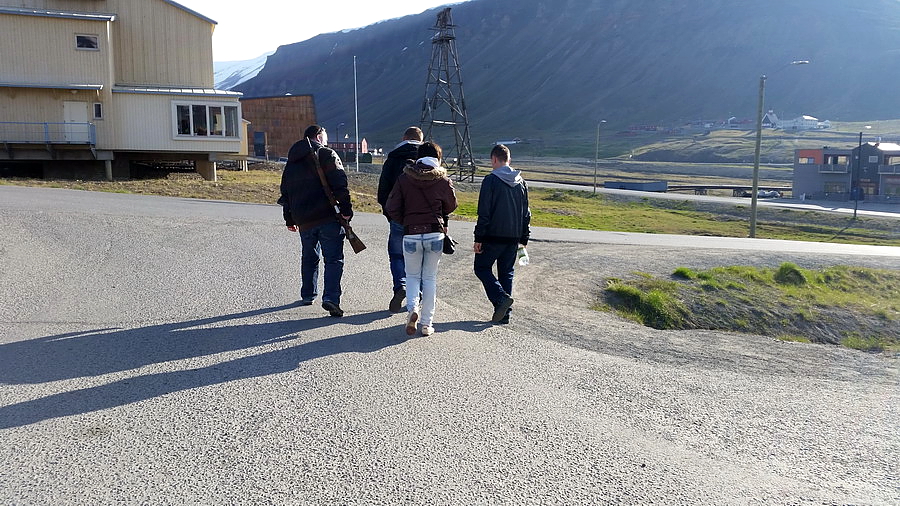
Feels like landing on another planet
This part of Norway doesn’t belong to the Schengen area and therefore in Oslo airport you have to follow international departures and go through passport control. The arrival on the island was like landing on another planet. The light, the air, the snow-covered mountains, the strong sun after midnight – everything was different.
We arrived after midnight but the city bus picked us up so had no problem getting to the centre. More surprises awaited us at the hotel. I had to leave my shoes in the foyer because that’s the custom in every house and public building.
I discovered a safe in the cloakroom where the guns are stored. In Longyearbyen you can only walk around without a gun within the city limits or if you are on an organized tour – in this case the guide will have one. All residents have guns and tourists who plan individual trips can rent one.
To rent a gun you’ll need a gun licence or you have to submit a request at the local police station including proof of a clean criminal record. If someone is not a skilled shot, a short training session is available.
The polar bear danger is not a local legend. Many people have fallen prey to the giant animals over the years despite all the precautions. There are no problems with guns though. Longyearbyen has the largest number of guns per capita in the world but there have been no accidental or violent gun-related deaths in the town.
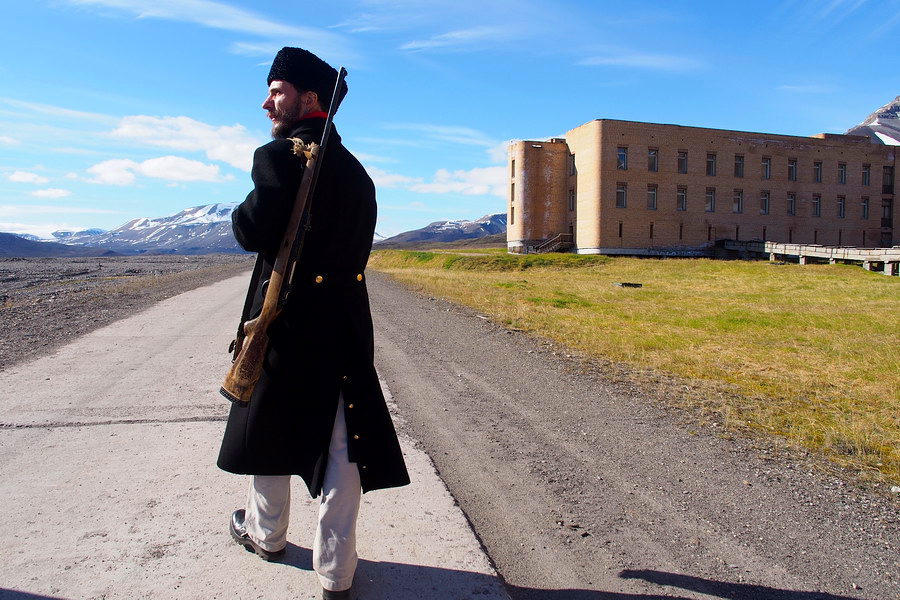
Cat-free area
Longyearbyen mainly serves as the base for excursions but you can also happily spend a day in town. I looked into the small but very interesting museum which displays the history of the archipelago, the first explorers and their living conditions. You must take your shoes off here as well but there are slippers on the shelves arranged by size so if you don’t want to look around in your socks you can borrow a pair.
Strolling around town, I quickly got used to seeing people walking around with a gun slung over their shoulder as it if it were a handbag. It is however prohibited to take a gun into a public building; there are warning signs in banks and offices.
The capital’s colourful houses are standing on tall stilts which are not though visible. The island’s ground is permafrost at between 10-40 metres’ depth while the top layer melts in summer. The stilts are needed for stability so that the houses do not move in the summer “heat”.
The residents are not allowed to keep cats, partly because of the risk of them catching rabies from foxes and partly to protect the island’s unique birdlife. Most dogs are the sled dog type, so Spitsbergen is not the home of the Pekinese.
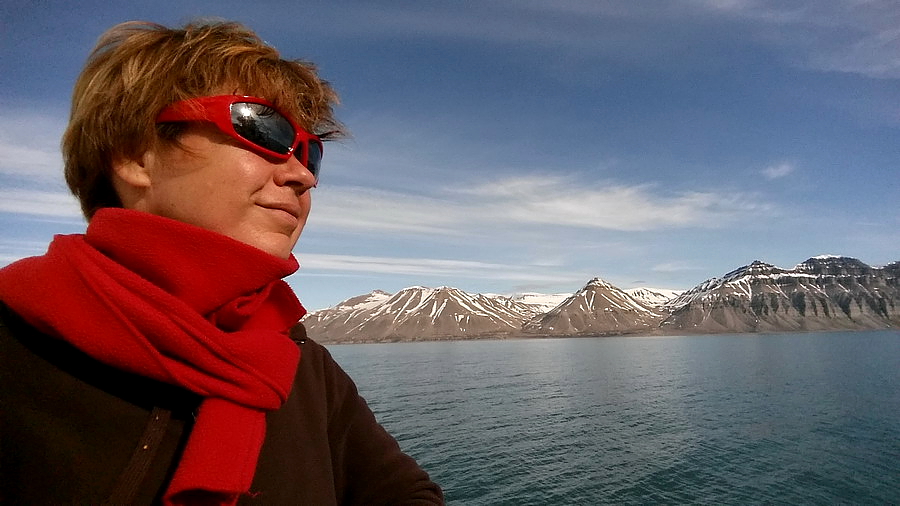

Another unusual sight is the large number of snowmobiles parked on the streets. This is the most popular form of transport in the town and its vicinity but now they were hibernating through summer on the grass among the houses. The island’s inhabited settlements are not connected by roads so you can only walk in summer or take the snowmobile in winter to get from one to another.
My head was already full with all the peculiar things I had experienced in just a few hours on the island but Spitsbergen had more surprises in store. You can really travel back in time to a now closed-down Russian mining town, Pyramiden, where a guide from St. Petersburg leads you around. This is where you will find the northernmost piano as well as the northernmost Lenin statue and you can learn about the unique way of life of its former population.
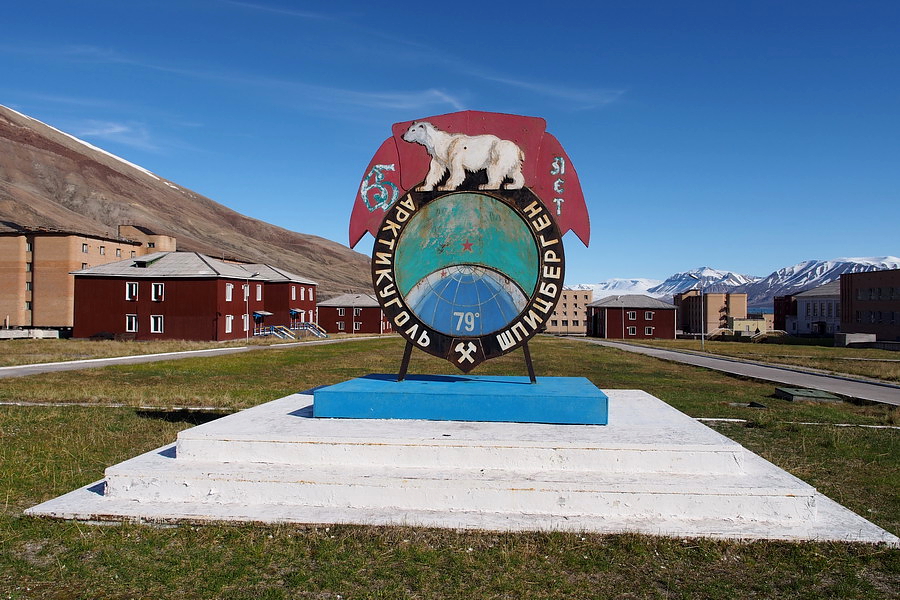

It was just the most fascinating short trip I have had and I can hardly wait to return and circumnavigate the whole island!

